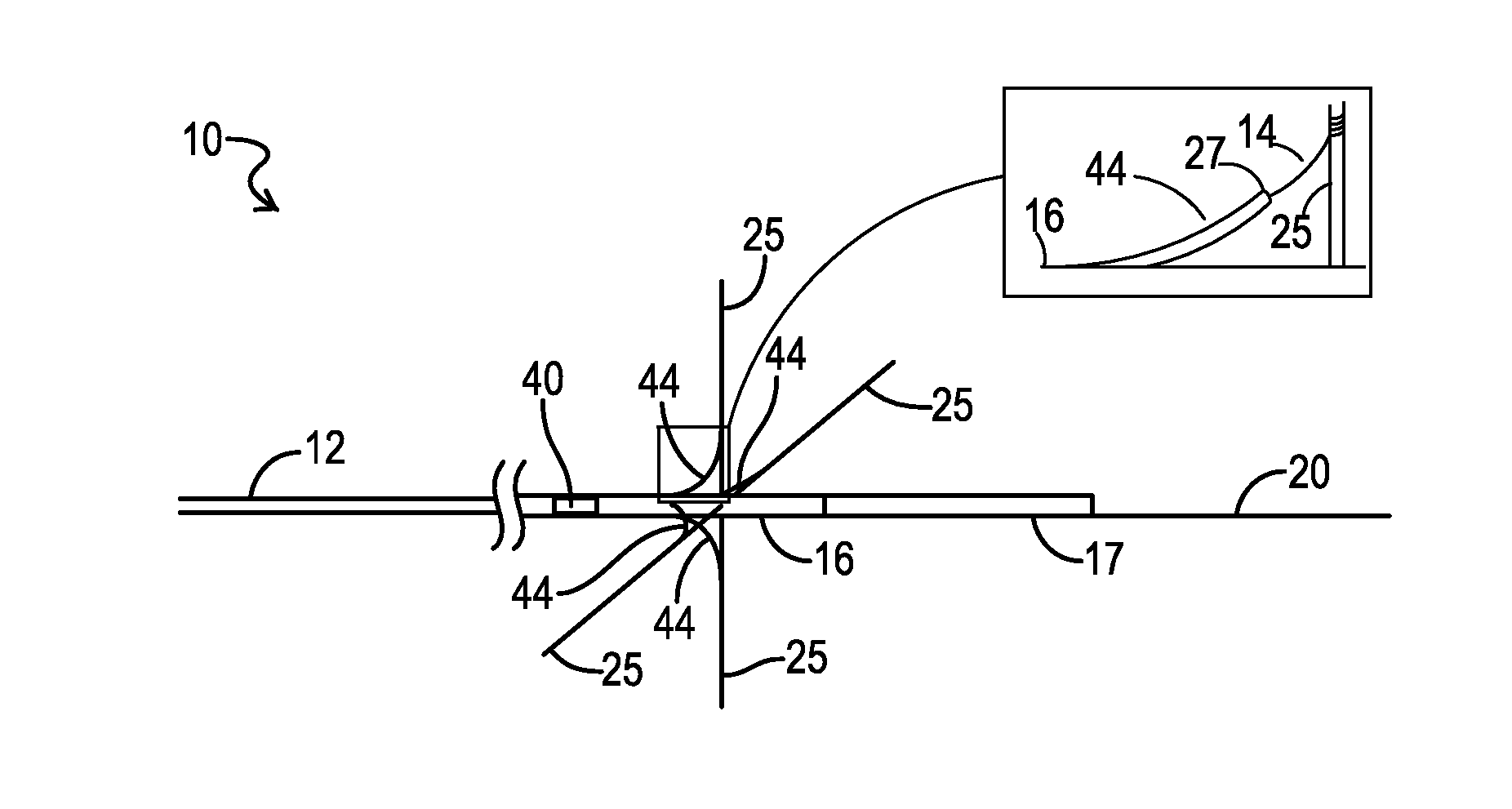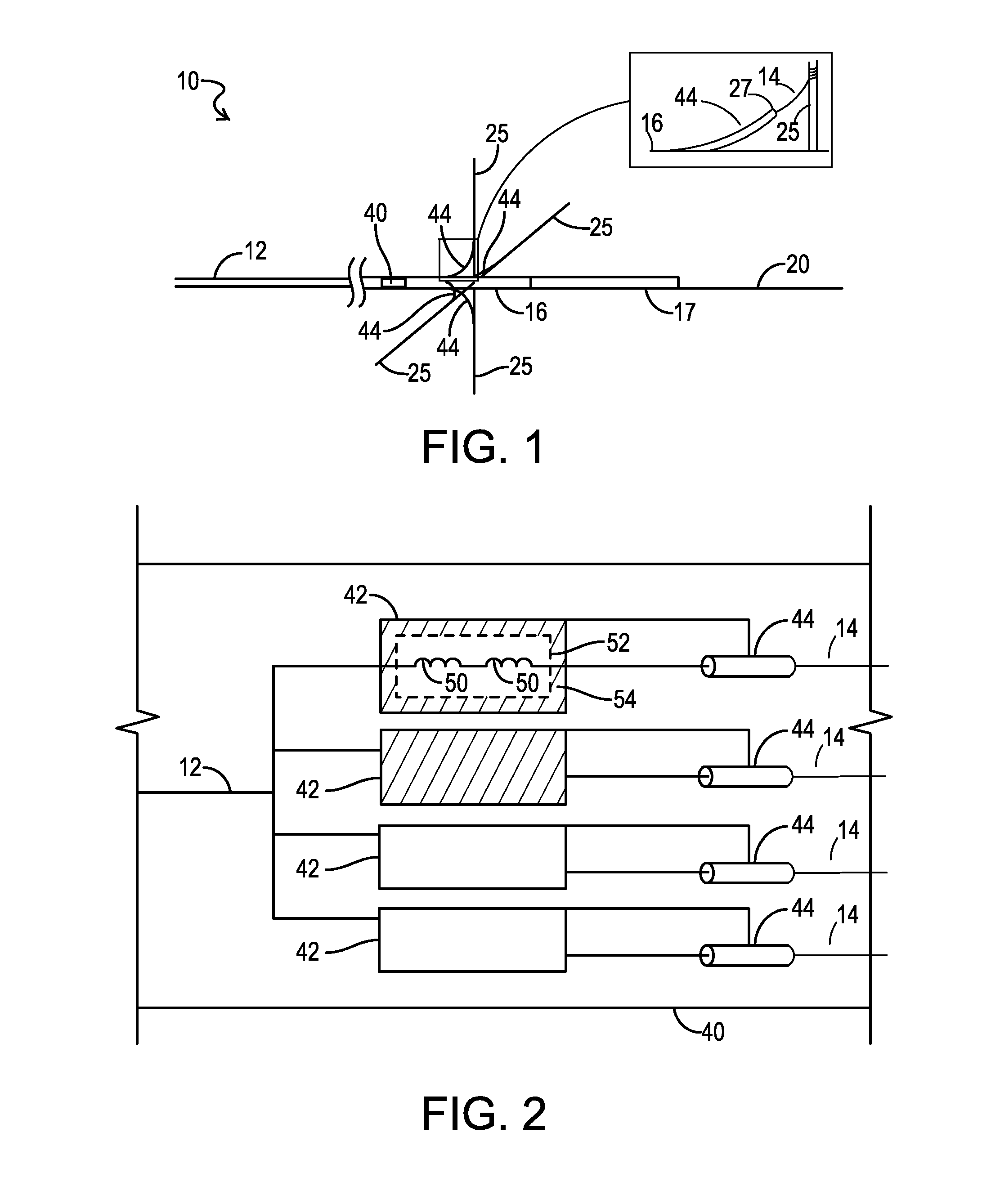Omnidirectional buoyant cable antenna for high frequency communications
a high-frequency communication and buoyant cable technology, applied in special-purpose vessels, subaqueous/subterranean adaption, transportation and packaging, etc., can solve the problems of limited utility of unidirectional signal coverage and limited radio frequency communication for submerged underwater vehicles, so as to reduce seawater losses, increase radiated power, and eliminate signal null areas
- Summary
- Abstract
- Description
- Claims
- Application Information
AI Technical Summary
Benefits of technology
Problems solved by technology
Method used
Image
Examples
Embodiment Construction
[0015]Referring to FIG. 1, the present invention teaches a buoyant cable antenna 10 that is towed by a submerged underwater vehicle (not shown) as the antenna 10 floats on the surface of the water 20. The antenna 10 is electrically connected to the underwater vehicle via a coaxial cable transmission line 12. The antenna 10 is composed of three sections; 1) an encapsulating cylindrical encasement 16; 2) a buoyant section 17 comprising a cable made of polyethylene foam that provides the buoyancy in seawater; and 3) four identical antenna elements 14 that are attached to and protrude from encasement 16.
[0016]In a preferred embodiment, encasement 16 is made from a potting compound such as a thermo-setting plastic or a silicone rubber gel that is water tight, flexible, tear resistant and meets the tensile requirements for towing a buoyant cable antenna at specified speeds as well as deployment and retrieval by the BRA-24 system. In a preferred embodiment encasement 16 encapsulates the el...
PUM
 Login to View More
Login to View More Abstract
Description
Claims
Application Information
 Login to View More
Login to View More - R&D
- Intellectual Property
- Life Sciences
- Materials
- Tech Scout
- Unparalleled Data Quality
- Higher Quality Content
- 60% Fewer Hallucinations
Browse by: Latest US Patents, China's latest patents, Technical Efficacy Thesaurus, Application Domain, Technology Topic, Popular Technical Reports.
© 2025 PatSnap. All rights reserved.Legal|Privacy policy|Modern Slavery Act Transparency Statement|Sitemap|About US| Contact US: help@patsnap.com


